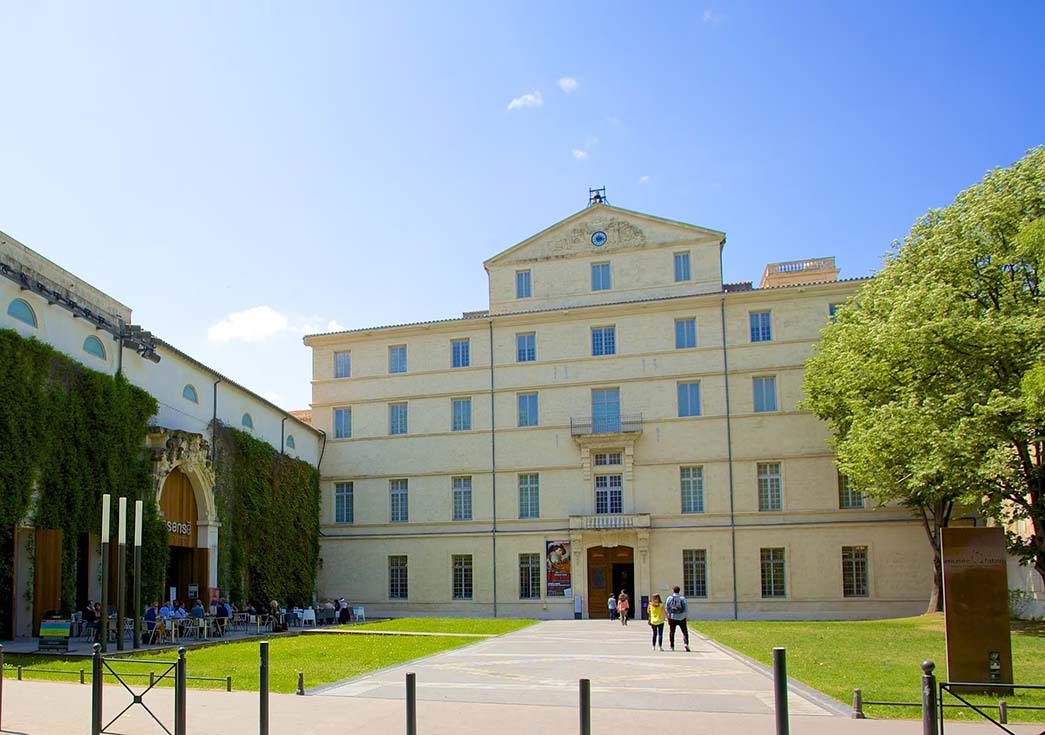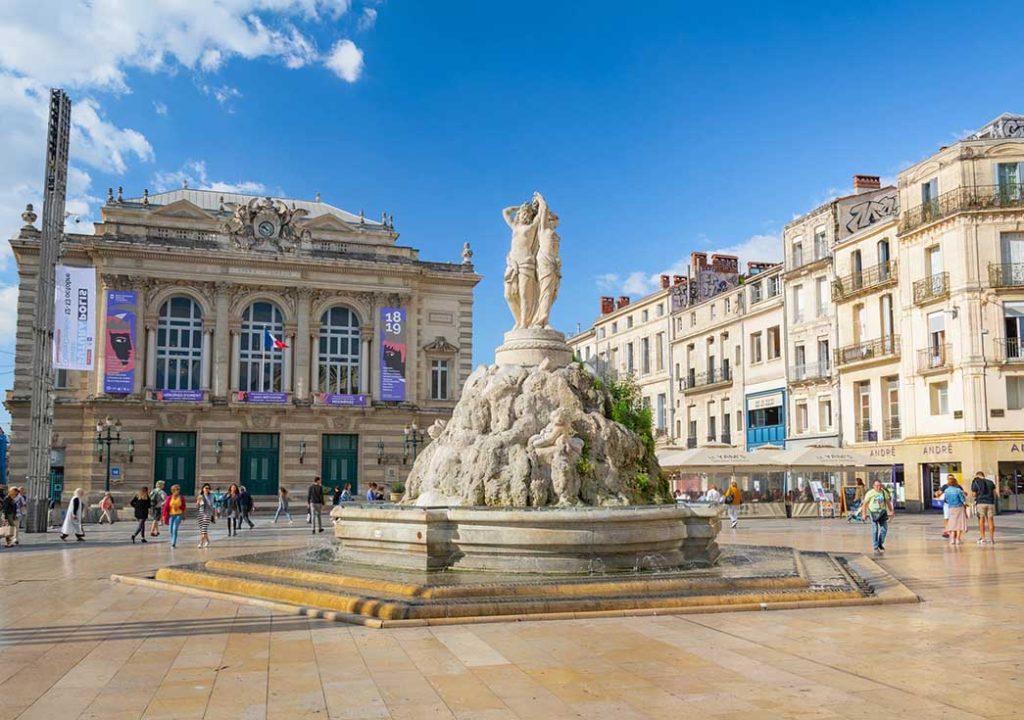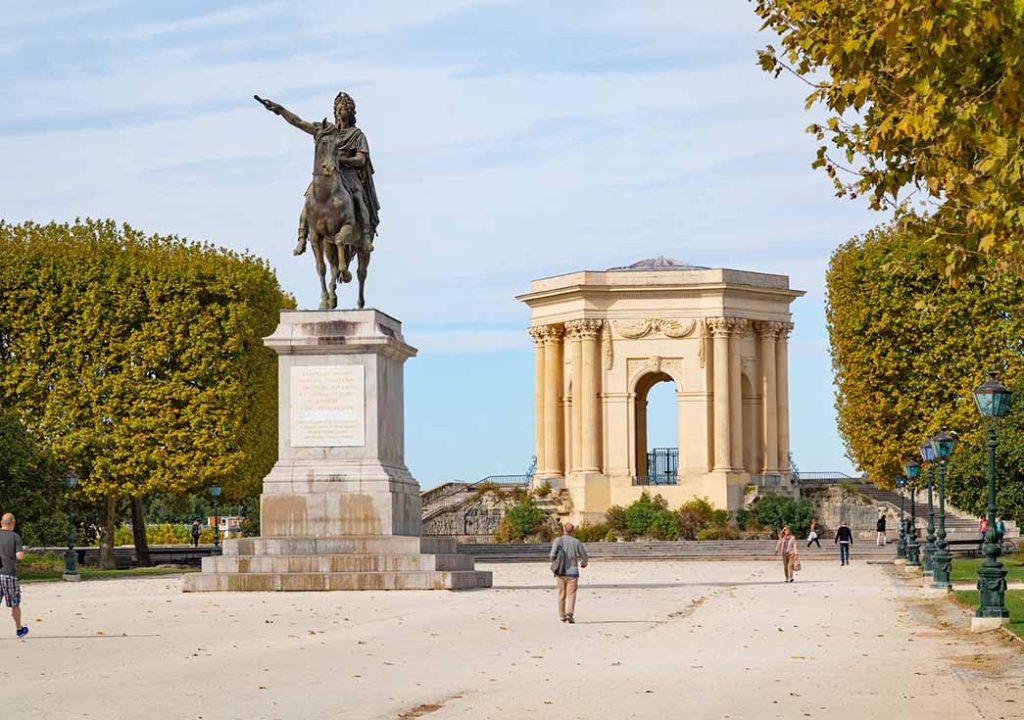Montpellier Must-See Attractions: Take a Journey into This Cultural Capital of Southern France

Montpellier, a historic city located in the south of France, boasts a rich cultural heritage and a unique Mediterranean flair. As one of France’s oldest cities, Montpellier is not only renowned as a center for culture, art, and academia, but it also attracts thousands of tourists with its distinctive architectural style, abundant historical landmarks, and beautiful natural landscapes. Every street, every building, and every park in this city is imbued with the marks of history and the spirit of culture, giving visitors the feeling of stepping through time to experience the city’s unparalleled charm. The juxtaposition of ancient history with modern vibrancy makes Montpellier a dynamic destination where past and present exist in perfect harmony, making it a must-visit for travelers seeking both cultural immersion and breathtaking landscapes.
1. Montpellier’s History and Cultural Background
Montpellier is a vibrant city in the Languedoc region of southern France, near the Mediterranean Sea. Historically, Montpellier has been famous for its academic and medical research, housing one of the oldest medical schools in the world, which dates back to the 12th century. The city’s medical faculty was highly influential in shaping European medicine and attracting scholars from all over the world. The city’s name, “Montpellier,” originates from Latin, meaning “my mountain,” symbolizing the city’s long history and cultural heritage. Over the centuries, Montpellier has become a melting pot of various cultures, influenced by its proximity to the Mediterranean and its role as a crossroads for trade and intellectual exchange.
Montpellier is also one of the youngest university towns in France, attracting a large number of students and scholars every year, making the city atmosphere always lively and innovative. This youthful energy, combined with its rich academic traditions, has helped Montpellier maintain a forward-thinking edge, drawing in people from all walks of life. In addition to its academic achievements, Montpellier has a significant place in the fields of art, architecture, and literature. Whether it’s the architectural style of the Renaissance, the contemporary artistic innovations in its museums, or the literary contributions that have emerged from its intellectual circles, Montpellier has always been at the forefront of French culture. The city’s commitment to preserving its heritage while embracing modernity makes it an exciting place for both locals and visitors. Next, let’s explore some of Montpellier’s must-visit attractions and experience the endless charm of this cultural capital, where history, art, and academia seamlessly blend into the fabric of daily life.
2. Must-Visit Attractions
1. Place de la Comédie (Comedy Square)
As Montpellier’s most famous square, Place de la Comédie is undoubtedly the heart of the city. It is a gathering place for both locals and tourists and serves as the cultural and social center of Montpellier. The square is surrounded by buildings that blend classical and modern elements, with the central sculpture “Le Trois Grâces” and the magnificent architectural ensemble giving visitors the feeling of stepping into an art temple where history and modernity intertwine. The square is often bustling with activity, with street performers and artists adding to its lively atmosphere. Visitors can also find elegant shops and restaurants lining the square, making it the perfect place to sit and people-watch. Whether you are enjoying a cup of coffee or taking in the surroundings, Place de la Comédie offers a unique blend of historical charm and modern energy.
At Place de la Comédie, you can leisurely stroll, admire the unique architectural style of the city, or enjoy a relaxed time at the nearby cafés and restaurants. This place is not only a great spot for sightseeing but also an ideal place to experience local life and culture. The square is also home to the Opéra Comédie, where you can catch a performance if you are interested in the local arts scene.

2. Le Jardin des Plantes (Botanical Garden)
The Jardin des Plantes in Montpellier is one of the oldest botanical gardens in France, founded in 1593. Covering an area of about 4 hectares, this garden is a paradise for nature lovers and photographers. The garden showcases a wide variety of plants, including tropical plants, Mediterranean plants, and rare species. Walking along the garden’s paths feels like stepping into a world of plants, with the fresh air and rich greenery making it a place of peace and relaxation. The garden also features beautifully designed flowerbeds, ponds, and serene spots where you can sit and enjoy the peaceful ambiance.
In addition to the plants, the botanical garden also features some ancient buildings, such as the historic greenhouse and museum, allowing visitors to learn about the history of botany. This is also an ideal place to unwind and meditate, offering a temporary escape from the hustle and bustle of the city and immersing visitors in the embrace of nature. The garden often hosts educational workshops and events, making it a great spot for both tourists and locals to deepen their appreciation of nature.
3. Montpellier Cathedral
The Montpellier Cathedral is one of the city’s most important religious buildings, dating back to the 14th century. It is a Gothic-style cathedral known for its grand exterior and exquisite stained-glass windows and intricate carvings inside. The atmosphere inside the cathedral is tranquil and solemn, making it a perfect place for quiet reflection. The cathedral is a prime example of Gothic architecture, with soaring arches and detailed stonework that showcase the craftsmanship of the time.
The cathedral’s bell tower is also worth visiting. From the top of the tower, you can enjoy a panoramic view of the entire city of Montpellier, which is absolutely stunning. Whether you are a follower of religious faith or a lover of historical architecture, the Montpellier Cathedral is sure to leave a lasting impression. The cathedral is open to visitors year-round and hosts regular religious services, adding to its living historical significance.
4. Musée Fabre (Fabre Museum)
The Musée Fabre in Montpellier is one of the most important art museums in France, housing a vast collection of European paintings and sculptures. The museum’s exhibits span from the Renaissance to modern times, with a particular focus on 18th and 19th-century European painting. Here, you can admire not only France’s artistic achievements but also the artistic exchanges between different European countries. The museum is housed in a beautiful historic building, and the interior’s grand design complements the exceptional artwork on display.
Walking into the museum feels like entering a hall of art, with various exquisite paintings and sculptures showcasing the art styles of different historical periods. For art lovers, this is undoubtedly a must-visit destination. Even for ordinary visitors, the museum’s beautiful exhibits will leave you captivated. The museum frequently holds special exhibitions and cultural events, making it a dynamic center for art lovers and cultural enthusiasts alike.
5. Antigone District
The Antigone District represents modern architecture in Montpellier and is one of the most futuristic areas of the city. The unique architectural style here blends classical and modern elements, with the Antigone Square designed by renowned architect Richard Rogers standing out as a notable feature. The square is surrounded by buildings with a strong Ancient Greek style, yet modern design infuses new life into the area. The district is named after the Greek mythological figure Antigone, and its architecture pays homage to classical antiquity while embracing contemporary innovation.
The Antigone District is not only a paradise for architecture enthusiasts but also a great place for shopping and relaxation. The area is home to many stylish shops, restaurants, and cafés, making it a perfect spot for visitors to unwind while enjoying the city’s vibrant atmosphere. The district is also home to parks and open spaces where you can relax, making it an ideal destination for both art and nature lovers.

6. Promenade du Peyrou (Peyrou Promenade)
The Peyrou Promenade is one of the most beautiful scenic spots in Montpellier, located at the western edge of the city and extending into the city park. Tall trees line the promenade, creating a lush green environment, and at the end of the path stands a magnificent arch and fountain, surrounded by tranquil and serene views. This is a popular spot for locals to jog, walk, and relax, and an ideal place for visitors to enjoy the city’s beauty and unwind. The area is also home to a large equestrian statue of Louis XIV, adding a historical touch to the picturesque scene.
Standing at the end of the promenade, you can overlook the entire city of Montpellier, with distant mountains and the clear blue sky, a truly mesmerizing sight. Especially during sunset, the Peyrou Promenade becomes an ideal location for taking beautiful photos, leaving visitors with unforgettable memories. The promenade also leads into the Château d’Eau, a former water tower, which adds an additional element of historical charm to the area.
Montpellier is not only a dynamic modern city but also an ancient city with a rich history and deep cultural heritage. From grand cathedrals to beautiful parks, from historic museums to modern architectural districts, each attraction carries rich history and culture, giving visitors a unique experience of the city’s charm. Whether you’re a history lover, an art enthusiast, or a fan of natural landscapes, Montpellier offers a memorable journey for everyone.
Tags: Montpellier Cathedral, Musée Fabre, Place de la Comédie